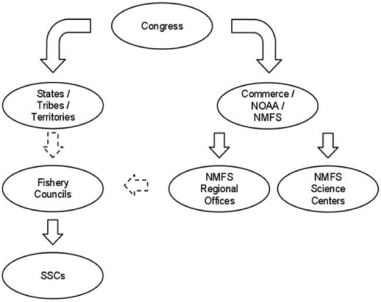Fisheries Management: A Love-Hate Relationship
Lionfish invasions are an ecological disaster. These venomous, yet beautiful, creatures are roaming their new habitat, the Atlantic reefs. They are depleting the stocks of native fish. They are damaging the tourism industry. They are contributing to the degradation of the fishery system as a whole.

So, there you have it. Lionfish are bad and we want to get rid of them. The question is: how do we accomplish that? It’s a lot more complicated than it seems because there are multiple components and multiple disciplines involved. One way to approach this problem is to begin by understanding and analyzing how fisheries in the U.S., and especially the Virgin Islands, are managed. To be honest, it’s quite complex.
The Magnuson-Stevens Fishery Conservation and Management Act governs fisheries in the U.S. This act was created in 1976 for the purpose of managing fish stocks and establishing control over coastal waters. The decentralization of management authority into eight Fishery Management Councils allows each regional council to manage its own fish stocks. The Caribbean Council manages fish stocks in the U.S. Virgin Islands.
By now, you may be wondering how fish stocks are managed. In simplest terms, there are policy-makers and there are scientific communities. The policy-makers consist of the council. Council members are political appointees that usually represent the heads of state fishery agencies, commercial fishermen, and recreational anglers.

Management of U.S. Fisheries under the Magnuson-Stevens Act – Diagram from “The impact of empowering scientific advisory committees to constrain catch limits in US fisheries” (Crosson 2012)
The Scientific and Statistical Committee (SSC) guides each council. These people, along with the National Marine Fisheries Service (NMFS) Science Centers, make up the scientific community. The NMFS science centers help produce data on fish stock assessments. The data is then peer-reviewed and presented to the SSC. Afterwards, the SSC interprets the data and makes an acceptable biological catch (ABC) recommendation to the Council. The Council has the final say on the catch limit, but it may not exceed the ABC recommendation that was set forth by the SSC.
The interactions between the Council and the SSC are what create fishing policies in the U.S. However, these interactions are often times very bitter and it is easy to see why. The SSC tends to be very conservative. They are scientists and they want to conserve the fish. On the contrary, the Council is largely made up of fishermen and they want the SSC to raise the ABC recommendation so that more fish can be caught and sold.
The Council and the SSC really do have a love-hate relationship. They love each other because they help each other in policy-making but they also hate each other for their disagreements on the catch limit. It’s already a better love (or hate) story than Twilight and this is just one of the many challenges that U.S. fisheries face.
As students studying fisheries management in the U.S. and how this might impact lionfish invasions, we were fortunate enough to have a Skype call with Scott Crosson, an expert in this field. Scott Crosson is a National Ocean and Atmospheric Administration (NOAA) economist and is also a member of the SSC.
Dr. Crosson explained to us how stock assessments are made from fishery-dependent and fishery-independent data. Fishery-dependent data is obtained through recorded landings from commercial fishermen and recreational anglers. On the other hand, fishery-independent data is often collected by NOAA boats that capture and record samples of fish species. Both forms of data collection are used in forming stock estimates.
However, in the U.S. Virgin Islands (USVI), there is no data from recreational fishers. Absence of data will make stock estimates less accurate. Furthermore, fishermen in the USVI sell their own catch. Dr. Crosson estimates that 50% of U.S. Caribbean fishermen do not turn in government-required forms that state what type of fish they are catching and how many. In addition, lionfish are not a main food source and so are not usually harvested. Therefore, stock estimates of lionfish may be inaccurate.
And thus, by looking at lionfish invasions from just the fisheries management perspective, we already see many challenges ahead. These are challenges that are not only concerned with lionfish invasions as an environmental problem, but are also concerned with the flaws and imperfections of the USVI fishery system as a whole. In order to solve this problem, multiple perspectives from various disciplines need to be considered. Hopefully, one day, lionfish will be eradicated from the Atlantic reefs.
